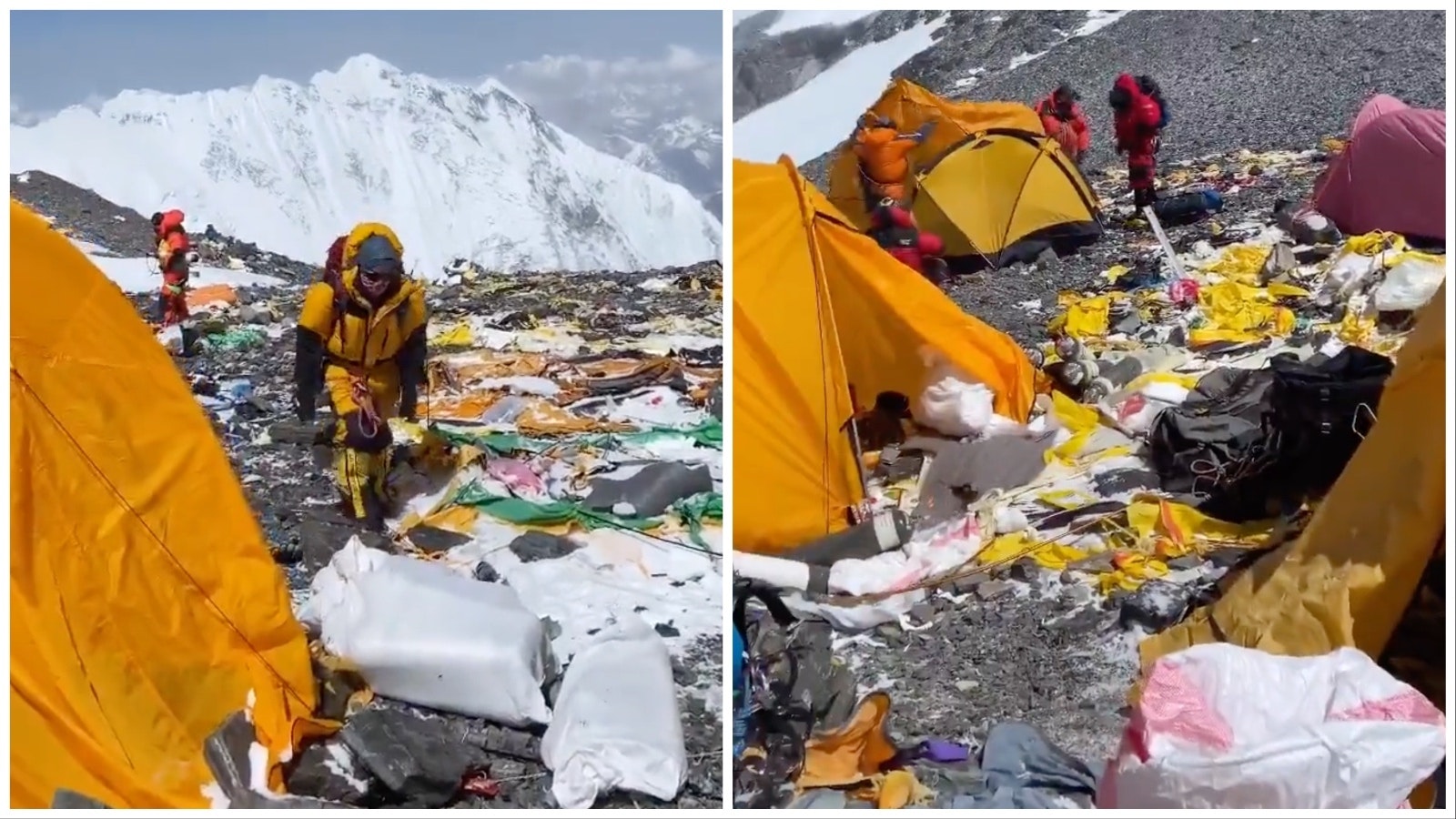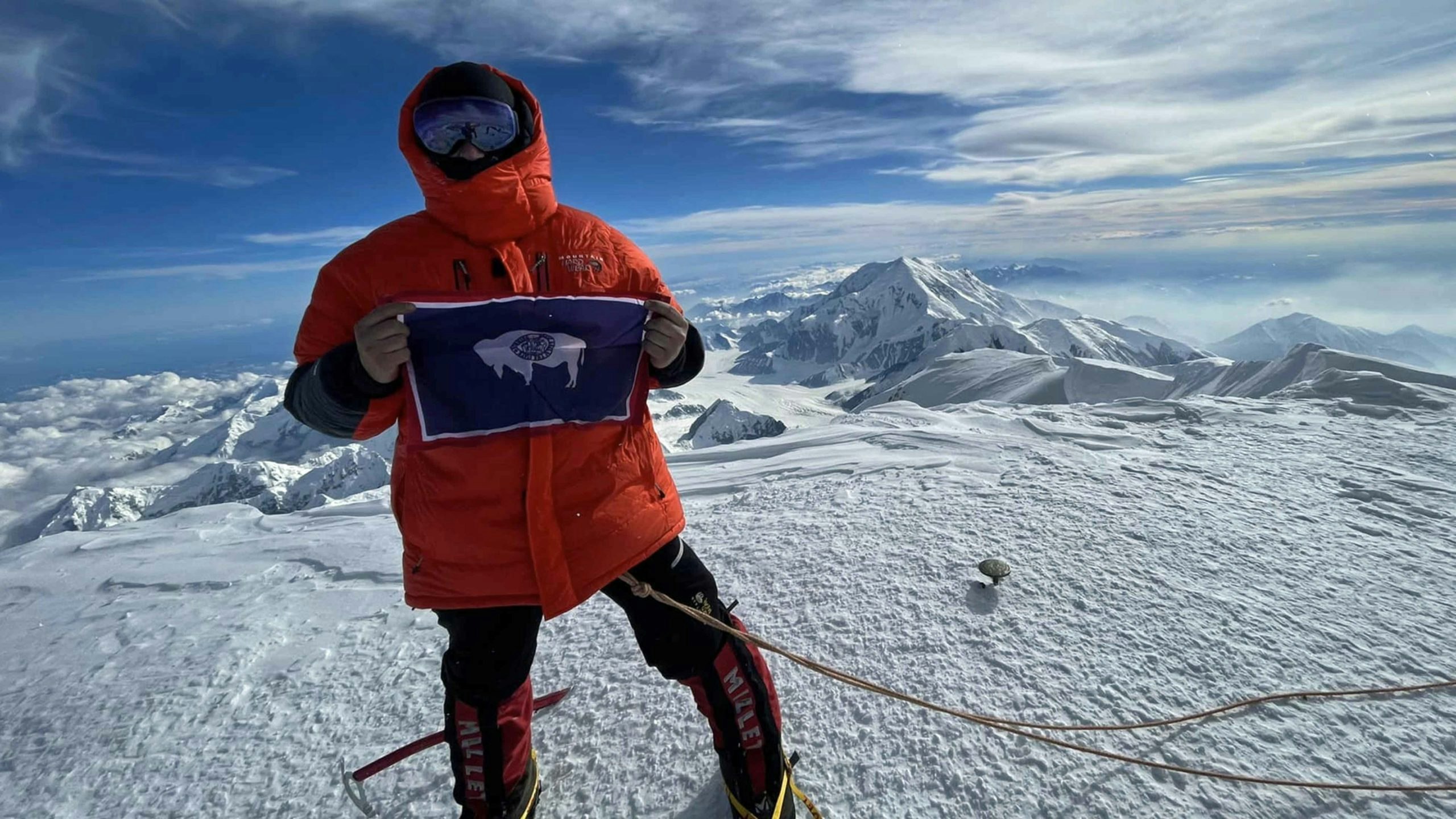Two Wyoming mountaineers who have been up close and personal with the trashed-out death zone the Nepal side of Mount Everest has become are concerned for the safety of the Sherpas tasked with recovering a growing number of bodies off the world’s highest peak.
The Nepal government is focusing on removing more than 200 bodies that remain on the mountain since records of climbing it began a century ago, as well as trash during this year’s climbing season.
Laramie’s Mark Jenkins told Cowboy State Daily about how he stepped over four bodies on his way to reaching the world’s highest summit with a National Geographic expedition in 2012.
“Although I felt very sorry for them and their families, I was not stunned,” he said about the grim reminders of just how dangerous climbing at that altitude and in harsh conditions can be.
Jenkins is a journalist, mountaineer and adventurer who has climbed mountains all over Wyoming and the world.
“Mountaineering is a mortal sport. People die, especially arrogant people,” he said. “I found out later that all those that I stepped over were clients who refused to turn around. Hubris is death on a big mountain.”
The BBC reported this week that Nepal has committed about $40,000 to try and remove bodies from the death zones of Everest and nearby Mount Lhotse. A 15-day window in late May and June allowed them to bring down four bodies and a skeleton.
More than 300 deaths have been recorded in the Everest over the past century, and more than 200 of those bodies remain there. Nepal’s Tourism department told the BBC eight people died on the mountain this year, and 18 in 2023.
Jenkins said that in his opinion, instead of risking the lives of Sherpas to bring the bodies down from the death zone, they should build a cemetery at Camp IV on Everest to bury people under the rocks.
To reduce deaths, he advocates for the Nepal government to limit the number of seasonal permits from 500 to 200 and require all those who get on he mountain to have climbed another 8,000-meter peak before they can join an Everest expedition.
“According to Sherpas, a full 50% of clients on the mountain don’t have the experience to be there,” Jenkins said.
Night Recovery
The BBC reported that the team worked at night to lessen the impact to other climbers on the mountain.
A Sherpa who was part of the effort told the BBC that he “vomited sour water many times. Others kept coughing and others got headaches because we spent hours and hours at very high altitude.”
The two climbers identified, one recovered from Mount Everest and the other from Mount Lhotse, were American Roland Yearwood, who died in 2017, and Milan Sedlacek, who died on Lhotse in May 2012. Identification of the other two bodies and skeleton is underway.
Casper mountaineer and sports physician Joe McGinley said his attempt in May to get to the top of the mountain was derailed because of a cold that sent him home. He never climbed high enough to encounter any of the remains.
“The bodies are up on the summit ridge, that is where you see them mostly. That’s why it’s so hard to get them down,” McGinley said.
‘They Are Frozen Solid’
McGinley said the biggest factor that authorities considered had to be the “risk versus benefit” of the effort. All those involved put their lives at risk, and any recovery effort in the death zone comes at great risk.
“It’s not as simple as some people think. It’s not just that you have to carry someone down,” he said. “They become frozen and almost physically attached to the mountain. It takes a lot of effort to detach the body from the mountain and then a lot of effort to bring them down. They are frozen solid.”
Families of those whose bodies were recovered would obviously be appreciative of the body recoveries, McGinley said.
According to the BBC story, the financial cost to remove a body from the mountain is too steep for many families of climbers, and the danger involved means many companies will not consider the risks.
In this year’s operation, 12 people were needed to lower a body from 26,000 feet, with each needing four cylinders of oxygen. One cylinder costs more than $400, meaning that $20,000 is needed for oxygen alone.
Trash Situation
As for the huge amount of garbage on the mountain that makes some base camps look more like landfills, McGinley said when he was on the mountain in May at the base, the trash situation seemed under control.
That wasn’t the case during McGinley’s first trip to Everest in May 2023 when he described some areas as a “garbage dump.”
The BBC reported 11 tons of trash was removed from the mountain this year.
“It’s great for the mountain and it’s great for climbing community,” McGinley said about the clean-up effort. “It’s wonderful to see that Nepal and local groups are getting involved to clean up the mountain. When I was there last it looked pretty good. They had gotten a lot of the trash out of the lower mountain.”
He said the Nepalese are working hard to change the negative sterotypes about the mountain that have been there for the past few years.
Not A New Problem
Jenkins said his experience in 2012 was that there were “enormous piles of trash” along the southern route up the mountain, much of it from previous expeditions. He said a solution for the future would be to pay Sherpas who carry loads up the mountain to carry the trash down.
“If you incentivized the Sherpas with money, the mountain would be completely cleaned up after a few years,” he said.
Meanwhile, McGinley said his own return to the world’s tallest peak remains on his agenda. It’s the last on his quest to summit the seven highest peaks on all seven continents.
“This year it was such a fluke thing. I had a cold in Casper before I got on the airplane and then it just got really bad when I got over there and started doing the practice climb,” he said. “After I got back, I was miserable for a few weeks. I mean I was really sick. So, it was just bad luck.”
In 2023, McGinley also attempted Everest and called off his ascent because of crowding and a death toll that had hit 12, with more climbers reported missing.
McGinley has climbed Mount Vinson in Antarctica, Mount Aconcagua in South America, Mount Elbrus in Europe, Denali in North America, Mount Kilimanjaro in Africa, and the Carstensz Pyramid in Indonesia.
Dale Killingbeck can be reached at dale@cowboystatedaily.com.












